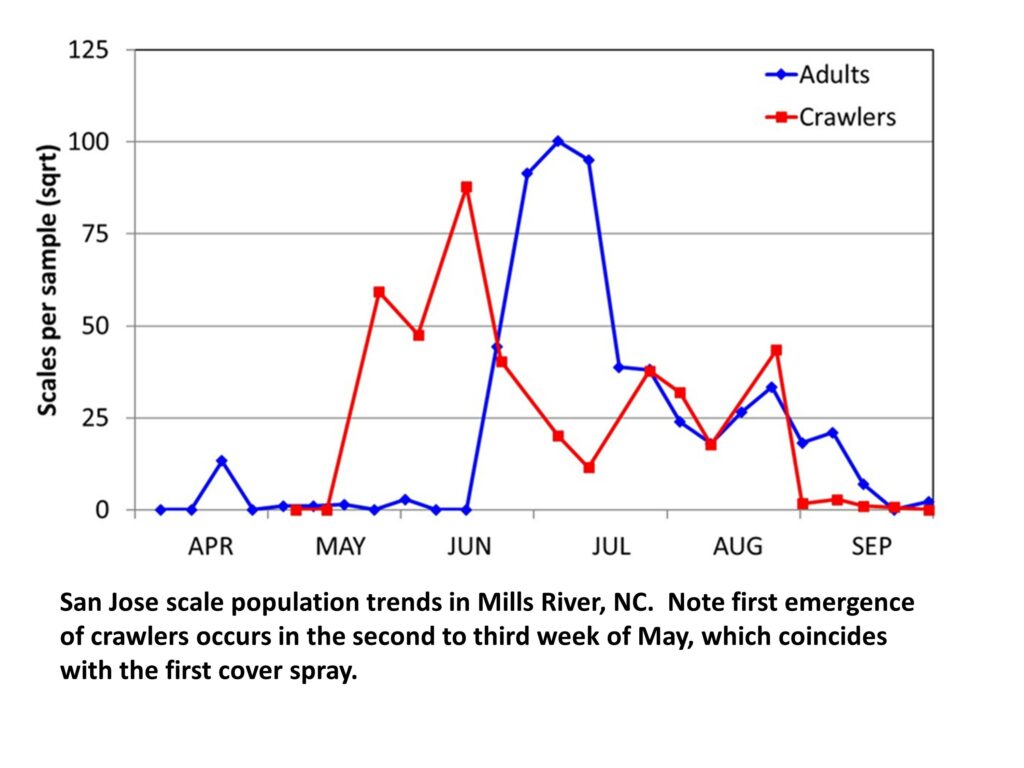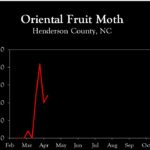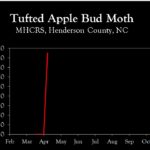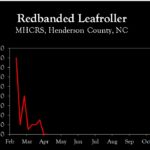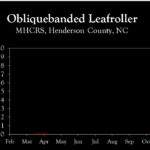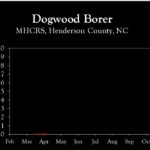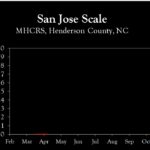WNC Orchard Insect Pest Populations – May 3, 2022
go.ncsu.edu/readext?862743
en Español / em Português
El inglés es el idioma de control de esta página. En la medida en que haya algún conflicto entre la traducción al inglés y la traducción, el inglés prevalece.
Al hacer clic en el enlace de traducción se activa un servicio de traducción gratuito para convertir la página al español. Al igual que con cualquier traducción por Internet, la conversión no es sensible al contexto y puede que no traduzca el texto en su significado original. NC State Extension no garantiza la exactitud del texto traducido. Por favor, tenga en cuenta que algunas aplicaciones y/o servicios pueden no funcionar como se espera cuando se traducen.
Português
Inglês é o idioma de controle desta página. Na medida que haja algum conflito entre o texto original em Inglês e a tradução, o Inglês prevalece.
Ao clicar no link de tradução, um serviço gratuito de tradução será ativado para converter a página para o Português. Como em qualquer tradução pela internet, a conversão não é sensivel ao contexto e pode não ocorrer a tradução para o significado orginal. O serviço de Extensão da Carolina do Norte (NC State Extension) não garante a exatidão do texto traduzido. Por favor, observe que algumas funções ou serviços podem não funcionar como esperado após a tradução.
English
English is the controlling language of this page. To the extent there is any conflict between the English text and the translation, English controls.
Clicking on the translation link activates a free translation service to convert the page to Spanish. As with any Internet translation, the conversion is not context-sensitive and may not translate the text to its original meaning. NC State Extension does not guarantee the accuracy of the translated text. Please note that some applications and/or services may not function as expected when translated.
Collapse ▲ Petal Fall to First Cover Sprays
Petal Fall to First Cover Sprays
Depending on location, some are still applying petal fall sprays and others are approaching first cover. Last week’s update focused on petal fall and the importance of choosing an insecticide effective against plum curculio and oriental fruit moth. However, there have been some questions about the efficacy of insecticides recommended at petal fall against green fruitworm, which was not included in the relative efficacy table because of its sporadic occurrence. Nonetheless, any insecticide with a rating of 4 or more against oriental fruit moth is also highly effective against green fruitworm, including Assail, Imidan, Verdepryn and Voliam Flexi.
As we approach the first cover spray, attention will turn to the codling moth and San Jose scale.
Codling moth
Biofix for the codling moth degree-day model was set as 22 April at the Mountain Horticultural Crops Research Station in Mills River (elevation 2,067 ft). Biofix in lower elevation orchards such as Cleveland County generally occurs about one week earlier. As of today (3 May), about 120 DD have accumulated in Henderson County. In Cleveland County, assuming a biofix date of 15 April, approximately 220 DD have accumulated.
In orchards with moderate to high codling moth populations, an initial insecticide application should be made at 250 DD, which will occur later this week in lower elevation orchards (about 1000 ft). At higher elevations, such as Henderson County (about 2,000 ft), 250 DD is predicted to occur in 8 to 10 days. However, in orchards with low codling moth populations, initial insecticide applications can wait until about 350 DD. Finally, insecticides targeting first generation codling moth are generally not needed in orchards using mating disruption for codling moth, but monitoring with pheromone traps can help determine if a supplemental application is needed.
Next week’s update will focus on codling moth insecticide options and resistance management strategies.
San Jose Scale (SJS)
With prebloom Lorsban (chlorpyifos) no longer an option for San Jose scale, greater focus is now placed on timing applications for emergence of first generation crawlers, which occurs near the first cover spray (see figure below).
Two commonly used and excellent materials for SJS are Esteem and Centaur, and for resistance management they should be rotated annually. It should also be noted that under low codling moth pressure Esteem will also serve as an effective codling moth control, primarily due to its ovicidal activity. Other insecticides that will provide good control of SJS at first cover include Diazinon 50W, Assail, and Movento.
Learn more about southeastern apple insect pests at the Apple Insect Management page.
2022 Average Weekly Trap Captures
| HENDERSON COUNTY | |||
| Insects per trap | |||
| Apr 20 | Apr 25 | May 2 | |
| Codling moth | 0.0 | 8.0 | 12.0 |
| Oriental fruit moth | 21.0 | 10.0 | 12.0 |
| Tufted apple bud moth | 0.0 | 0.0 | 7.0 |
| Redbanded leafroller | 3.0 | 0.0 | 0.0 |
| Obliquebanded leafroller | 0.0 | 0.0 | 0.0 |
| Lesser appleworm | – | – | – |
| Apple maggot (abandoned and research orchards) | – | – | – |
| Brown marmorated stink bug (commercial) | – | – | – |
| Brown marmorated stink bug (unsprayed) | 0.0 | 0.5 | 1.0 |
| Spotted tentiform leafminer | 0.0 | 0.0 | 0.0 |
| Dogwood borer | 0.0 | 0.0 | 0.0 |
| Peachtree borer | 0.0 | 0.0 | 0.0 |
| Lesser peachtree borer | 6.0 | 24.0 | 45.0 |
| San Jose scale | 0.0 | 0.0 | 0.0 |
| Ambrosia beetle (all species) | 11.0 | 3.5 | 1.5 |
*Note that these averages illustrate only the timing of insect emergence and fluctuations in populations, and are not representative of population levels in any given orchard. The only way to have an accurate assessment of an individual orchard’s populations is to set up traps in that orchard.
2022 Accumulated Degree Days
| HENDERSON COUNTY | ||||
| Apr 20 | Apr 25 | May 2 | ||
| Codling moth (Biofix: April 22) | – | 41 | 104 | |
| Oriental fruit moth (Biofix: April 12) | 87 | 172 | 260 | |
| Tufted apple bud moth (Biofix: April 27) | – | – | 62 | |



